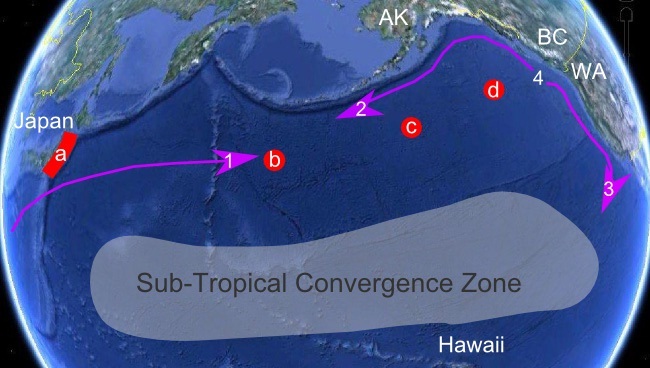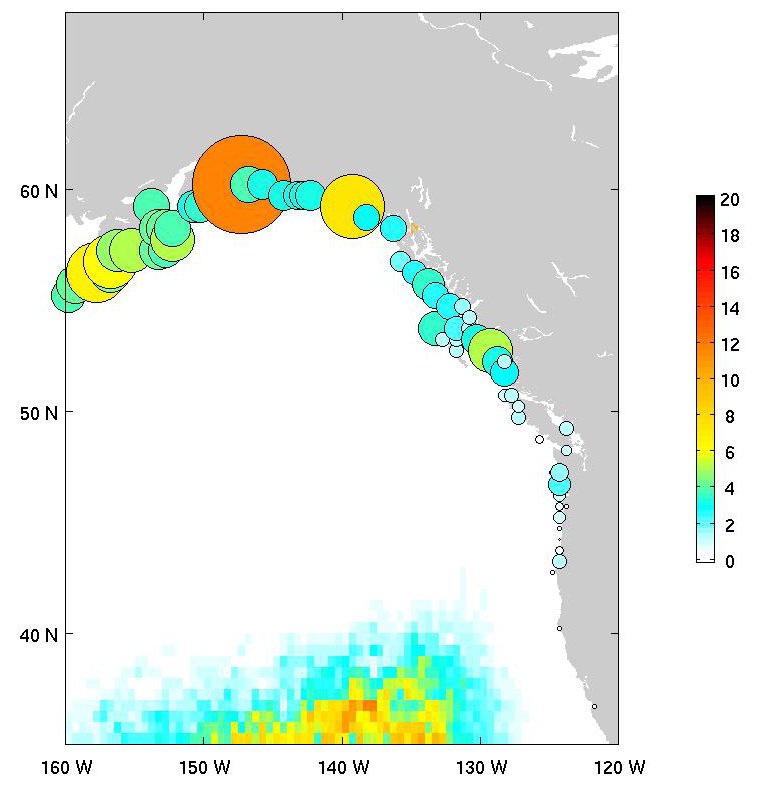Washington researchers have come up with new estimates of debris from last year’s tsunami in Japan. Of course, not all of it is expected to come across the Pacific Ocean.
“The dominant part of that floating debris may never even make landfall,” said Ian Miller, coastal hazards specialist with Washington Sea Grant.
Based on previous research, Miller expects much of the debris will end up in the Pacific Sub-Tropical Convergence Zone. “What’s known colloquially as ‘The Garbage Patch’,” said Miller.
There will still be a significant amount of debris that avoids the Zone and could eventually roll up on the Alaska coast. Miller was co-author of a report last month that was based on available peer-reviewed marine debris literature. It was intended to provide more-detailed information for those managing clean-up activities.
“How many dumpsters do we need to have on certain beaches? How many volunteers may we have to mobilize? Those are the kind of questions that we were trying to help managers grapple with,” said Miller.
Japanese estimates of debris washed out to sea range as high as 5-million tons. Of that, about 1.5-million tons may not sink and instead be carried into the Pacific, either pushed by winds or carried by currents. Miller says there’s a lot of uncertainty in those numbers. He says they then considered results of 14,000 satellite-tracked drifting drogues that roamed the global ocean and Dr. Curtis Ebbesmeyer’s research of container ship cargo knocked overboard. That was used to fine-tune assumptions on tsunami debris that might make landfall, as low as 2-percent to as much as 25-percent. That’s comes out to as much as 131 tons of debris for every mile of shoreline. But it’s more likely within a range of .5 ton to 6.7 tons per mile in Washington state and it could be spread out over multiple years.
Higher concentrations may head for the southern Alaska coastline after the debris is caught in a counter-rotating Gulf of Alaska gyre and is then spun out to shore over time.
Report on Debris Accumulation Scenarios in Washington State from the March 2011 Tohoku Tsunami.


